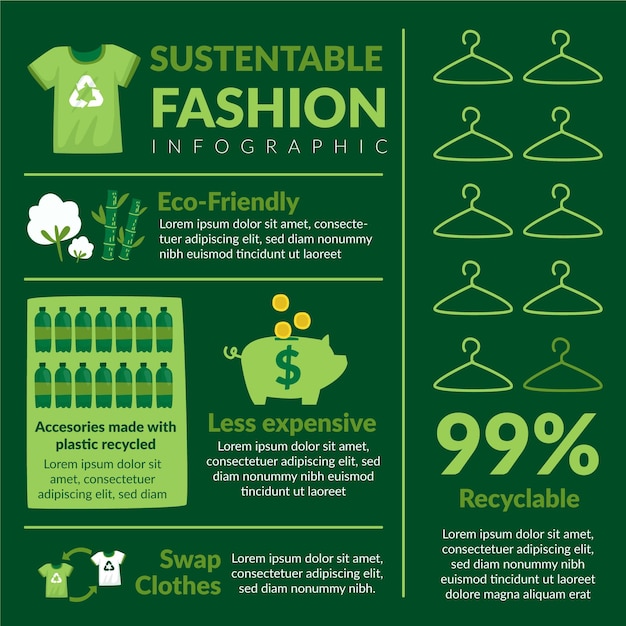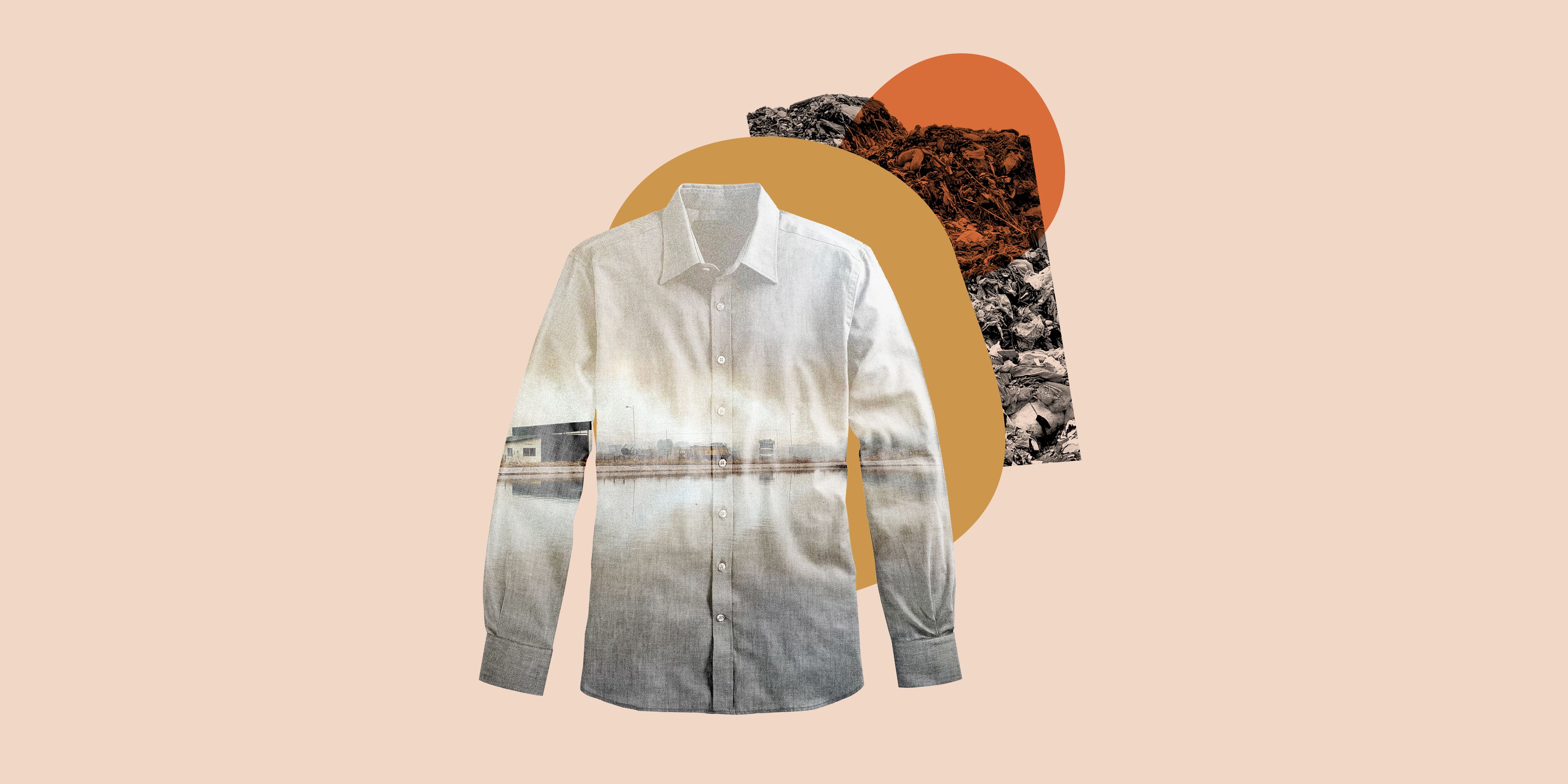Keep Ahead of the Curve by Exploring Ingenious Style Fads
In a market as vibrant as style, staying in advance involves even more than just adhering to present trends-- it requires an exploration of technology. The convergence of technology and fashion heralds a brand-new era of customer engagement.

Welcoming Smart Textiles
Recently, the garment industry has seen a transformative shift with the assimilation of smart textiles, a sophisticated innovation that blends modern technology with fabric. This evolution represents not just a blend of visual appeals and performance yet additionally a considerable jump towards sustainability and customization in fashion. Smart fabrics, also called e-textiles, embed sophisticated electronic devices such as sensing units and conductive strings within the textile, enabling garments to connect with the wearer or the atmosphere.
These textiles are developed to keep an eye on physical criteria, such as heart price or body temperature level, giving real-time wellness analytics. Past wellness applications, clever fabrics are also being made use of for flexible apparel, which can change shade or pattern in feedback to environmental stimuli, thus offering a dynamic fashion experience.
Additionally, the growth of energy-harvesting textiles that generate power from movement or sunshine is leading the way for self-sufficient wearable technology. This innovation is appealing to environmentally aware consumers and designers intending to decrease the ecological footprint of style. As research study and development in this area advancement, smart fabrics are expected to come to be increasingly prevalent, improving the landscape of modern style with their multifunctional capacities.
The Increase of 3D Printing
Transforming the manufacturing landscape, 3D printing has actually emerged as a game-changer in the garment industry. This cutting-edge modern technology has enabled developers to push the borders of imagination, producing detailed and personalized garments that were formerly unbelievable. By leveraging digital layout and additive manufacturing, 3D printing helps with the development of intricate geometries and patterns, allowing developers to experiment with brand-new appearances and structures.
A remarkable advantage of 3D printing in style is its capacity to produce on-demand, decreasing waste and decreasing stock needs. This effectiveness not just maximizes production procedures yet also enables quick prototyping, enabling designers to bring their visions to life in a much shorter duration. Furthermore, 3D printing supports modification somewhat unrivaled by standard approaches, providing individualized fits and unique styles customized to individual customer choices.
The surge of 3D printing has actually likewise equalized style, making it easily accessible to emerging designers that can now make premium items without substantial financial investment in typical manufacturing framework. As innovation continues to breakthrough, the apparel industry is poised to harness the complete possibility of 3D printing, exploring brand-new materials and methods that will certainly redefine just how fashion is developed and created.
Lasting Fashion Advancements
As the garment industry comes to grips with the pressing need for ecological duty, sustainable style technologies have actually arised at the forefront of transformative change. The expanding understanding of ecological impact has sustained a shift towards more eco-conscious practices and products. Designers and brand names are currently focusing on sustainability, integrating methods that minimize waste and minimize carbon impacts.
One considerable advancement is the rise of round style, which highlights recycling and upcycling to expand the lifecycle of garments. This method not just reduces waste yet also motivates consumers to embrace a more conscious approach to address garments intake.
Another breakthrough exists in the fostering of innovative dyeing methods that utilize all-natural dyes or waterless procedures, thereby minimizing the vast quantities of water and chemicals typically utilized in fabric dyeing. Furthermore, improvements in biotechnology have actually led to the development of lab-grown natural leather and fabrics, using ecologically pleasant and cruelty-free choices to conventional materials. With these introducing initiatives, the apparel industry is making significant strides in the direction of an extra lasting future.

Tech-Integrated Garments
Tech-integrated garments stands for a revolutionary fusion of fashion and technology, improving just how people engage with their garments. This cutting-edge domain name is noted by the addition of smart textiles and ingrained electronic parts, improving both capability and visual appeal. From fitness trackers embedded in sportswear to heated coats regulated by means of smart device applications, tech-integrated clothing uses consumers unprecedented convenience and adaptability.
Pioneering brands are driving this pattern, concentrating on producing garments that reply to ecological stimulations or individual commands. As an example, some garments can alter color or pattern in reaction to temperature changes, while others incorporate biometric sensors to monitor wellness metrics like heart price or stress and anxiety degrees. The seamless combination of technology into fabrics additionally reaches ecological sustainability, with efforts to develop self-cleaning fabrics or garments that get used to climate condition, therefore reducing the need for multiple layers.
In addition, the arrival of wearable modern technology is not just limited to apparel yet reaches accessories like watches and glasses, more expanding the scope of tech-integrated style. As the market continues to introduce, the possibility for personalization and personalization in garments expands, providing customers read what he said one-of-a-kind, tech-enhanced fashion experiences that accommodate their specific requirements and preferences.
Future of Virtual Style
Over the last few years, the future of virtual style has become a transformative force within the sector, leveraging improvements in digital modern technology to redefine exactly how style is produced, experienced, and eaten. By integrating increased truth (AR), digital truth (VIRTUAL REALITY), and 3D style devices, designers can currently craft immersive and interactive experiences that go beyond conventional style boundaries. Digital fashion enables the development of garments that exist only in digital settings, providing countless possibilities for technology without the limitations of physical manufacturing.
This digital change not only provides possibilities for innovative expression but additionally addresses sustainability concerns intrinsic in traditional fashion techniques. Cape Town Sustainable Fashion. By my website eliminating the requirement for physical sources, virtual style reduces waste and lessens carbon impacts. Furthermore, the increase of virtual fashion aligns with the boosting customer need for unique and tailored experiences, as online garments can be tailored and tailored to private choices with ease

Final Thought
The apparel industry's future hinge on the combination of sustainable methods and innovative modern technologies - Cape Town Sustainable Fashion. Smart textiles and tech-integrated garments are improving capability, while 3D printing provides opportunities for modification and waste reduction. Lasting fashion, with circular strategies and green products, demonstrates a commitment to ecological stewardship. Additionally, digital fashion is poised to redefine customer interactions. Adjusting to these trends is crucial for brands seeking to continue to be competitive and pertinent in this swiftly developing landscape.
In current years, the style industry has experienced a transformative change with the assimilation of wise fabrics, an advanced technology that mixes technology with fabric.As the fashion market grapples with the pressing demand for environmental responsibility, sustainable fashion advancements have actually arised at the leading edge of transformative adjustment.In current years, the future of digital style has actually arised as a transformative pressure within the sector, leveraging advancements in electronic technology to redefine how style is developed, experienced, and consumed. The surge of virtual fashion aligns with the increasing customer need for customized and distinct experiences, as virtual garments can be customized and customized to specific choices with convenience.
The style market's future lies in the combination of innovative technologies and lasting techniques.
Comments on “Exploring the Increase of Cape Town Sustainable Fashion Brands”